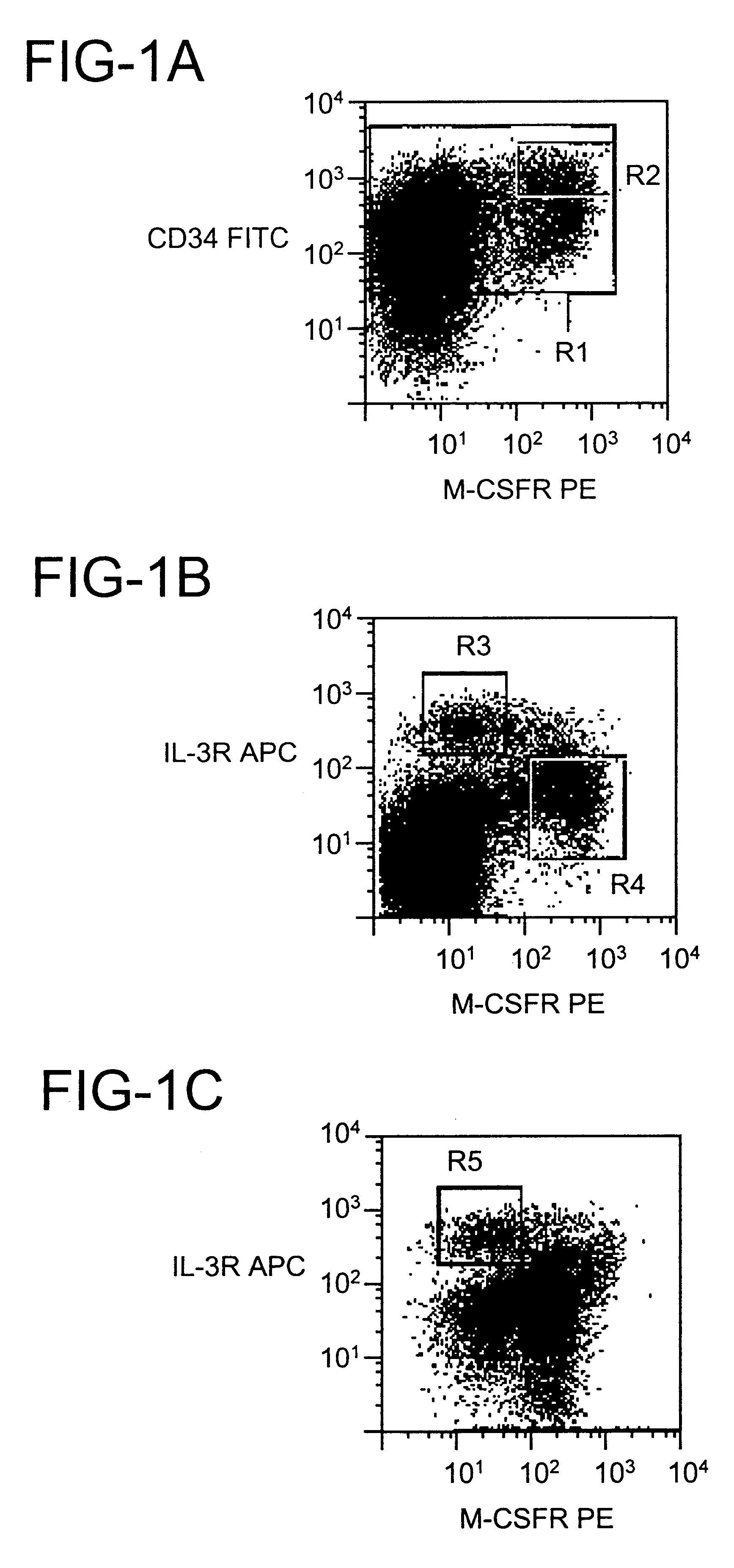CD123+ dendritic cells in blood and lymphoid tissues
a technology of dendritic cells and lymphocytes, applied in foreign genetic material cells, biochemistry apparatus and processes, blood/immune system cells, etc., can solve the problems of difficult isolation of dendritic cells, little information concerning dendritic cells in various organs, and it is not known definitively whether these cells constitute a separate lineage of cells
- Summary
- Abstract
- Description
- Claims
- Application Information
AI Technical Summary
Benefits of technology
Problems solved by technology
Method used
Image
Examples
Embodiment Construction
To examine the developmental potential of CD34.sup.+ CD123.sup.hi cells, the cells were sorted using a flow cytometer and fluorescently labeled antibodies using techniques well-known in the art, and cultured with a wide range of cytokines capable of supporting multiple hematopoietic lineages [granulocyte-macrophage colony-stimulating factor (GM-CSF), G-CSF, M-CSF, interleukin-3 (IL-3), IL-6, stem cell factor (SCF) and erythropoietin (Epo)]. Cells from freshly isolated bone marrow and those generated in vitro from CD34.sup.hi CD115.sup.+ cells gave similar results, but the viability was better for the latter. Sorted cells rapidly formed large aggregates after a few hours in liquid culture, a growth pattern which is characteristic of DCs. After 7 days the cells were positive for the DC marker CD1a, whereas markers for monocytes (CD14) and granulocytes (CD15) were absent or expressed at low density (see FIG. 2A). Wright-Giemsa-stained cytospin preparations showed that the cells had abu...
PUM
| Property | Measurement | Unit |
|---|---|---|
| Fluorescence | aaaaa | aaaaa |
Abstract
Description
Claims
Application Information
 Login to View More
Login to View More - R&D
- Intellectual Property
- Life Sciences
- Materials
- Tech Scout
- Unparalleled Data Quality
- Higher Quality Content
- 60% Fewer Hallucinations
Browse by: Latest US Patents, China's latest patents, Technical Efficacy Thesaurus, Application Domain, Technology Topic, Popular Technical Reports.
© 2025 PatSnap. All rights reserved.Legal|Privacy policy|Modern Slavery Act Transparency Statement|Sitemap|About US| Contact US: help@patsnap.com

